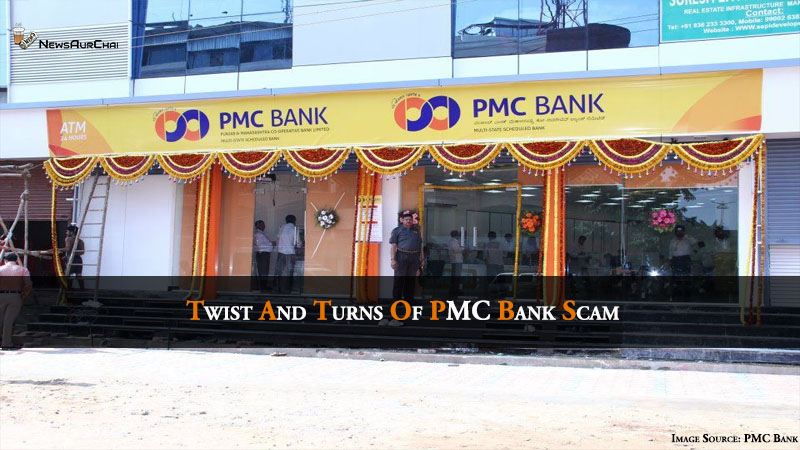What can be done when an individual’s hard-earned money gets stuck in banks? Punjab & Maharashtra Co-operative PMC Bank is yet another entrant to join the series of cooperative banks that have been laid under restrictions by the RBI. As of March 2019, 26 Urban Cooperative Banks (UCBs) are placed under directions of the Central bank. Ultimately who suffers? Obviously, the innocent depositors–all thanks to mismanagement/fraud which is happening in these banks. This means operations are regulated and, often, deposits are stuck.
Every time a crisis such as this surfaces, eveyone sympathises with depositors. For a few days, this will be in a limelight and will be shown in all the news channels. Moreover, you will find people discussing the same at every nook and corner regarding the need to regulate these banks. However, it won’t stay for long as people move on with their lives and forget about the actual plight those depositors suffer.
What is exactly the PMC bank Scam?
The PMC Bank differs from previous banking scams of India. The savers are on the hook this time around, a situation that can’t be permitted to continue without taking strict actions for an already-stressed financial system.
The problem became apparent only when the RBI banned depositors from taking out more than Rs 1,000 for six months without offering any explanation.
PMC is a popular choice for small savers in the state of Maharashtra, whose capital — Mumbai — is the nation’s financial hub. The Reserve Bank of India stated that the restriction was necessary on account of major financial irregularities, the collapse of internal control and systems of the bank and wrong/under-reporting which were exposed. The RBI later relaxed the withdrawal limit to Rs 10,000.
However, this was not the end of the story as a new shocking truth came in front while the loan book was examined. It showed that out of the 88 billion loans 73% of PMC’s loan book was tied to just one borrower group– Housing Development and Infrastructure Ltd. HDIL is a Mumbai-based shanty town developer that is currently facing bankruptcy proceedings.
Despite this, the PMC’s annual report shows it to be a profitable lender with a capital adequacy ratio higher than the 12% minimum requirement and a bad-loan ratio of under 4% – almost acceptable by the current standards of India’s banking industry.
Current State of the PMC Bank Scam:
The PMC bank scam seems to have a bad history as the former MD of the bank appears to have played his card. As the journey of Joy Thomas to Junaid Khan has much more to do with the scam. He converted to Muslim to marry his PA, who is now the owner of nine flats in and around Mumbai. However, his Muslim identity is nowhere in any records as he remains to be known officially as Thomas.
The police had earlier identified and attached four flats held by Thomas in Mumbai and Thane, one of which is registered in the name of his son from his first wife. Earlier, Thomas, in a letter to RBI has revealed that he had created 21,049 dummy to hide accumulation and NPAs of HDIL. The bank has been accused of replacing 44 loan accounts of HDIL with the fictitious loan accounts. This was done to cover the massive loan defaults by the real estate group, which ended the bank in the current crisis.
Sixty-two-year-old Thomas is presently in police custody in the Rs 4,355-crore PMC Bank scam case. Apart from Thomas, real estate group HDIL’s promoters Rakesh Wadhawa and son Sarang, and the bank’s former chairman Waryam Singh have also been detained in connection with the case.
Link of Real estate and Indian Banks
The real estate market in India is currently in disorder. Property developers are leveraged to the hold and unable to build and deliver the apartments. Their troubles have, in turn, destroyed shadow banks, which are finding it troublesome to refinance their loans to builders. With the PMC scandal, even deposit-taking institutions run the risk of getting engulfed into a whirlwind of suspicion. The more reliable banks may witness a rush of deposits away from second-tier lenders with almost 9 trillion rupees in deposits. This disruption in liquidity could open up yet more fault lines at banks perceived to be weaker.
What Next?
As the regulatory system doesn’t take proper action, such cases end up in dust, till another bank scam surfaces. Why are such institutions even called banks, when it entirely doesn’t come under the purview of banking regulation of our country? A country with a low literacy relating to banking, where the depositors end up in misery after a bank run is a serious issue. Still, the regulatory authority doesn’t give much attention to the same. Why?
The answer to this is quite confusing–as any potential regulation requires unison building among differing parties, mainly central and state institutions. This partly has come in the way of taking actions on time. The statement made by Finance Minister Nirmala Sitharaman has given an assurance that the government will assess the situation. It would check whether legislative amendments are needed to implement effective regulation. If this comes true, it might bring out a bright side out of the PMC crisis.
Will this NDA government be able to make the messy financial situation prevailing in our country slightly better? As the confusion continues, we can only hope that the depositors questions and needs will be answered on time and appropriately.
